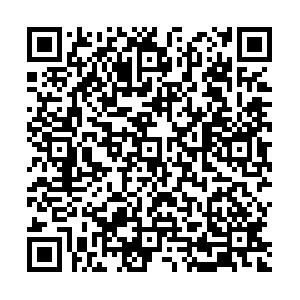| [1] |
Miller D W,Sedwick R J.Electromagnetic formation flight phase I report[R].Massachusetts:Massachusetts Institute of Technology,2003.
|
| [2] |
Sedwick R J,Miller D W.Electromagnetic formation flight final report[R].Massachusetts:Massachusetts Institute of Technology,2005.
|
| [3] |
Inampudi R,Schaub H.Optimal reconfigurations of two-craft coulomb formation in circular orbits[J].Journal of Guidance,Control and Dynamics,2012,35(6):1805-1815.
|
| [4] |
Pollock G E,Gangestad J W,Longuski J W.Inclination change in low earth orbit via the geomagnetic Lorentz force[J].Journal of Guidance,Control and Dynamics,2010,33(5):1387-1395.
|
| [5] |
Kong E M C,Kwon D W,Schweighar S A,et al.Electromagnetic formation flight for multisatellite arrays[J].Journal of Guidance,Control and Dynamics,2004,41(4):659-666.
|
| [6] |
Hashimoto T.Formation flight control using super conducting magnets[D].Massachusetts:Massachusetts Institute of Technology,2002.
|
| [7] |
Elias L M,Kwon D W,Sedwick R J,et al.Electromagnetic formation flight dynamics including reaction wheel gyroscopic stiffening effects[J].Journal of Guidance,Control and Dynamics,2007,30(2):499-511.
|
| [8] |
Ahsun U.Dynamics and control of electromagnetic satellite formations[D].Massachusetts:Massachusetts Institute of Technology,2007.
|
| [9] |
Ahsun U,Miller D W,Ramirez J L.Control of electromagnetic satellite formations in near-earth orbits[J].Journal of Guidance,Control and Dynamics,2010,33(6):1883-1891.
|
| [10] |
Alinger D J.System analysis and design for the resonant inductive near-field generation system(RINGS)[D].Maryland:University of Maryland College Park,2013.
|
| [11] |
Zeng G Q,Hu M.Finite-time control for electromagnetic satellite formations[J].Acta Astronautica,2012,74(3):120-130.
|
| [12] |
胡敏,曾国强.分离模块集群航天器发展概况[J].装备指挥技术学院学报,2011,22(4):61-66. Hu M,Zeng G Q.Developments of the fractionated spacecraft[J].Journal of the Academy of Equipment Command & Technology,2011,22(4):61-66(in Chinese).
|
| [13] |
Xu Z W,Shi P,Zhao Y S.Optimal control of two-craft electromagnetic formation in circular orbit[C]//Advanced in the Astronautical Sciences Series:24th AAS/AIAA Space Flight Mechanics Meeting.San Diego,CA:Univelt Inc.,2014,152:2547-2561.
|
| [14] |
张元文,杨乐平,朱彦伟,等.空间电磁对接的鲁棒协调控制[J].国防科技大学学报,2011,33(3):33-37. Zhang Y W,Yang L P,Zhu Y W,et al.Coordinated robust control of space electromagnetic docking[J].Journal of National University of Defense Technology,2011,33(3):33-37(in Chinese).
|
| [15] |
苏建敏,董云峰.利用人工势函数法的卫星电磁编队控制[J].北京航空航天大学学报,2012,38(2):213-217. Su J M,Dong Y F.Artificial potential function method for satellite electromagnetic formation control[J].Journal of Beijing University of Aeronautics and Astronautics,2012,38(2):213-217(in Chinese).
|
| [16] |
张皓.库仑航天器的动力学与控制研究[D].北京:北京航空航天大学,2012. Zhang H.The dynamics and control of coulomb spacecrafts[D].Beijing:Beihang University,2012(in Chinese).
|
| [17] |
邵龙飞.电磁航天器在轨协同运动控制研究[D].北京:北京航空航天大学,2014. Shao L F.On-orbit operation cooperative control of electromagnetic spacecraft[D].Beijing:Beihang University,2014(in Chinese).
|
| [18] |
赵育善,师鹏.航天器飞行动力学建模理论与方法[M].北京:北京航空航天大学出版社,2012:68-69. Zhao Y S,Shi P.Spacecraft flight dynamics modelling theory and method[M].Beijing:Beihang University Press,2012:68-69(in Chinese).
|
| [19] |
de Queiroz M S,Kapila V,Yan Q G.Adaptive nonlinear control of multiple spacecraft formation flying[J].Journal of Guidance,Control and Dynamics,2000,23(3):385-390.
|

 点击查看大图
点击查看大图






 下载:
下载:
